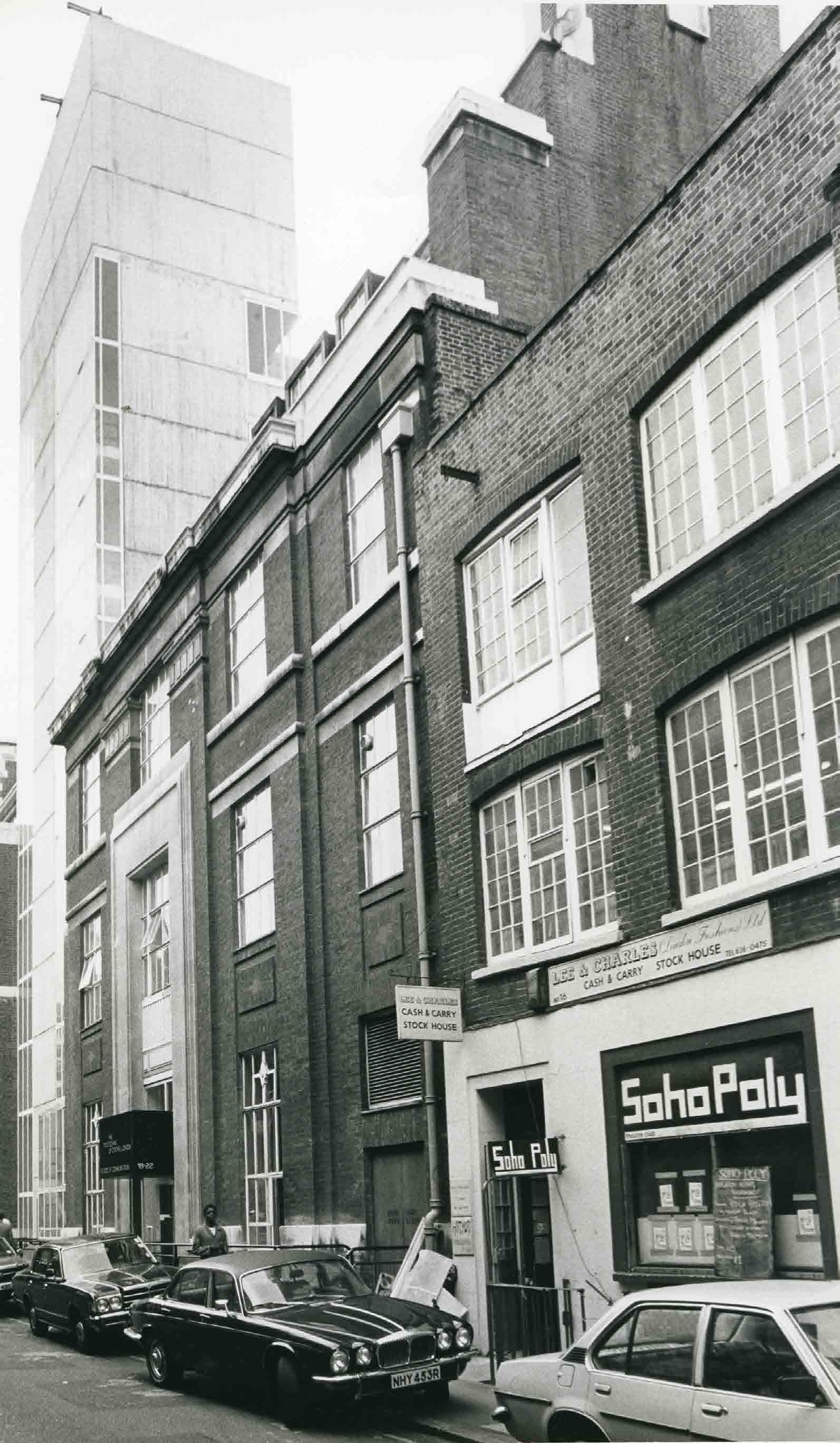
4 minute read
REIMAGINING THE SOHO POLY
Walking along Riding House Street in Fitzrovia, it would be quite easy to mistake a small descending flight of stairs as no more than an entrance to a storeroom, and for many years that’s all it was. But the subterranean cellar it leads to, rediscovered in 2012, was once host to some of the most influential artists, writers and directors of British post-war theatre and a pioneering fixture on the London fringe. In a project championed by Westminster’s Dr Matt Morrison and Professor Guy Osborn, ambitious plans are now under way to fully restore the Soho Poly Theatre to its former glory.
SETTING THE SCENE
Advertisement
The Soho Theatre was founded by Fred Proud and Verity Bargate in 1968, and in 1972 took up its first permanent residence on Riding House Street in a tiny basement owned by the Polytechnic of Central London (now the University of Westminster). It was here that it became known as the Soho Poly, established itself as the leading venue for radical theatre and made a major contribution to the alternative theatre movement.
Throughout the ‘70s and ‘80s, the Soho Poly was a platform for artists to push the boundaries of form and content; launching the careers of many successful actors and writers, including Hanif Kureishi, Simon Callow, Bob Hoskins, Caryl Churchill and Timberlake Wertenbaker – to name just a few.
During the Soho Poly’s heyday, it developed a unique ethos, dedicated to bringing culture into the everyday by pioneering lunchtime theatre. Plays of under an hour were performed to audiences as they ate their sandwiches, making theatre far more accessible; with no expectations of dressing up or restrictions for those with childcare responsibilities. It encouraged new audiences, and by dissociating from the notion that enjoying art was simply and exclusively a ‘leisure’ activity, encouraged people to disrupt and enliven their working day by welcoming more culture into it.
The theatre company moved out of the basement in 1990 and relocated to Dean Street. Now the Soho Theatre, it is one of the most successful theatres in London. However, the spirit of the theatre and its dedication to ‘disrupting the everyday’ has not been forgotten, and will remain the core philosophy of the Soho Poly Theatre once it is restored.
RENAISSANCE OF THE SOHO POLY
Dr Matt Morrison, Senior Lecturer in Creative Writing, rediscovered the Soho Poly in 2012 when conducting research for his doctorate on alternative theatre. After two decades of languishing as an abandoned storeroom, the space had to be cleared, cleaned and redecorated by a team of volunteers, before it was again recognisable as a theatre. Later that year, the three-day Soho Poly Festival was held to mark the venue’s 40th anniversary – the success of which affirmed what an asset to the community the theatre could be if fully restored.
For the past eight years, Matt and Guy Osborn (Director of the Centre for Law, Society and Popular Culture), have produced and hosted an array of creative pop-up festivals and events as a means of bringing the theatre to wider attention and gaining interest in its revival. Thanks to funding from the British Academy and the Arts and Humanities Research Council, the space was re-opened once more in 2017 as part of the Being Human Festival, which again met with great success.
VISION FOR THE FUTURE
The Soho basement is one of the few remaining sites of the alternative theatre
movement and its unique ethos is largely absent in today’s art scene. The plans for the restoration, therefore, are built around a specific vision for a new community-orientated arts venue, dedicated to bringing culture into the heart of the ‘everyday’. The performances, talks and workshops – free wherever possible – will all take place across the working day, and will be open to everyone.
“To me, the space is such a special one,” says Guy. “Everyone comments on it when they visit. But it’s more than a space – it’s a spirit and an ethos that reflects in many ways the radical possibilities that have always been a part of the DNA of the University of Westminster. The redevelopment and reimagining of the Soho Poly is rich with possibilities, and I for one can’t wait to see it realised.”
All of this, for now, depends on whether the project receives sufficient funding to fully restore the Soho Poly and bring the accessibility and safety of the venue up to 21st-century standards. But in the bustle of central London, an area which already sees midday yoga classes, walking business meetings and lunchtime hairdressing appointments, it’s not a far stretch to believe that once again, attendees at the Soho Poly will be queuing outside the iconic door to the basement during their lunch breaks and embracing the disruption to their day.
Find out more about the Soho Poly Restoration project: westminster.ac.uk/the-soho-poly-project








